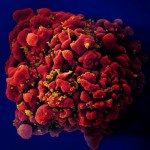Link to Pubmed [PMID] – 27147452
J Crohns Colitis 2016 Dec;10(12):1428-1436
BACKGROUND AND AIMS: Crohn’s disease [CD] is a complex disorder characterised by an inappropriate immune response, impaired barrier function and microbial dysbiosis. Mutations in nucleotide oligomeriation domain 2 [NOD2] are CD risk factors. Increase of intestinal permeability, CD4 T cell infiltration, and bacterial dysbiosis are also seen in Nod2-knockout [Nod2 ] mice. However, the specificity and relationship between these Nod2-associated abnormalities remain largely unexplored.
METHODS: Wild-type [WT], Nod1-knockout [Nod1 ] and Nod2 mice were analysed in parallel. Microbial composition was defined by 454-pyrosequencing of bacterial 16S rRNA genes. Mucin and antimicrobial peptide expression was assessed by RT-PCR. Cell populations from Peyer’s patches were determined by flow cytometry. Ussing chambers were used to measure intestinal permeability and bacterial translocation. Finally, to explore the impact of colonisation with mother’s microbiota at birth, analyses were also performed in Nod2 and WT mice born from WT surrogate mothers after embryo transfer.
RESULTS: Nod2 mice exhibited colonic bacterial dysbiosis different from WT and Nod1 mice. Altered expression of antimicrobial peptides and mucins in ileum and colon was associated with the microbial composition. Bacterial composition of Nod2 and WT mice obtained by embryo transfer was similar to that observed in Nod2 mice, arguing for a dominant effect of Nod2 -associated dysbiosis. In contrast, increased levels of CD4 T cells and gut barrier defects across Peyer’s patches were specific to Nod2 deficiency and independent of Microbial dysbiosis.
CONCLUSIONS: Nod2 deficiency is associated with a specific dominant dysbiosis which does not drive mucosal tissue and immune alterations.

